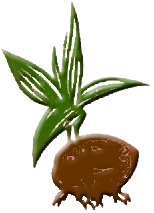 |
Peace - Justice - Freedom - Democracy
|
|
In a nutshellLand and population Further, more detailed informationLand and population
Nature
HistoryThe history of Fiji is very difficult to reconstruct before the arrival of the Europeans because there is no written recording of the past. The main knowledge comes from the oral tradition: legends, stories and songs were handed down from generation to generation. It is impossible to distinguish between fiction and reality, because facts became fused with myths and legends. There is no information available from archeology as all items were made of perishable materials. The ancestors migrated from Southeast Asia in about 2000 BC. Settled in Tonga and Samoa, they became the basis of the Polynesian civilisation. But those Austronesians living in Fiji came much later by a second migration wave of Papuan or darker skinned people and became the Melanesian. Historians are uncertain when this happened. Migration happened by canoes. As the population growth some 2500 years ago, the warfare between the tribes increased. The villages were built in mountainous forest for protection reasons. Cannibalism became wide-spread in the South Pacific. During the 17th century, European explorers crossed the South Pacific. Their descriptions of the dangerous reefs kept other mariners out of Fiji waters for the next 130 years. After the famous mutiny on the Bounty in 1789, Captain William Blight and 18 others drifted in Fijian waters on a small boat. Although chased by Fijian war canoes they sailed for Timor in the Dutch East Indies. Until beginning of 19th century, the main trade was done with Tonga; some Fijian islands stood under strong Tongan influence. By 1805, Europeans became important traders. Fijian chiefs were paid with muskets and powder and tribal warfare became more brutal. Sandalwood was the product of desire, but its accessible supply was exhausted by 1813 already. The first missionaries were sent by the London Missionary Society in the 1830s. They developed a grammar for the written Fijian language. The first converted were the chiefs. Many Fijian adopted Christianity while continuing to worship their own gods and ancestor spirits (as the kava ceremony shows today). The first white men were shipwrecked sailors or escaped convicts of British penal boats (beachcombers). Some of them were recruited to help the chiefs in warfare and in dealing with trade companies. Others didn't survive long before being eaten. The last recorded case of cannibalism is about Reverend Baker, who was killed and eaten on Viti Levu in 1868. Cakobau, the King of Fiji, became dependent on the American commercial agent John Brown Williams because of a cheat. As a result, some 80'000 hectares of the best land was awarded to the Australian Polynesia Company in 1867. The first step towards economic colonialisation was done. Cakobau wasn't able to achieve unity within the tribe chiefs. He gave over his power into British control and made Fiji a British Colony in 1874. New companies, some of them in charge until today, settled
down in Viti Levu and established sugar cane plantation. But the land rules
didn't change: Land tenure was reserved for indigenous Fijian clans. Others,
private and commercial, can get long term land leases for up to 99 years. The first major struggles for better conditions for Indians took place in the 1920s. The number of Indian Fijians rised more than 50% in 1946. Strong president Ratu Sir Lala Sukuna died in 1956, more labour uprising followed. The 1970 constitution cemented the indigenous Fijians right of land ownership and political power. Both posts, president and prime minister, are reserved to Indigenous. October 10th 1970 is the day, when Fiji became an independent nation. Ratu Kamisese Mara was its first prime minister and later president. In 1987 Fiji became a Republic and member of Commonwealth and
UN. The House of Representatives and the Senate are partly elected and partly
appointed by the Council of the Chiefs. The same council also appoints the
President. Todays political situationThe long term history of segregation in Fiji has been continued until today. Political parties are separated along racial lines. Indian Fijians, living here for generations, do still not have the same rights as indigenous Fijians. The 2000 coup by businessman George Speight (followed even by
Martial Law) was the end for the first elected Indian Fijian Prime Minister,
Mahendra Chaudhry, and his multiethnic government. The results of the 2001
elections don't give any reference towards final solutions for the racial
inequality. |
|
© Fiji Labour Party
|